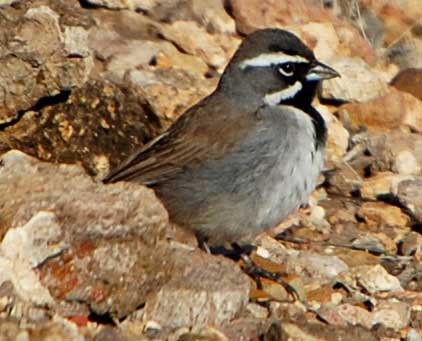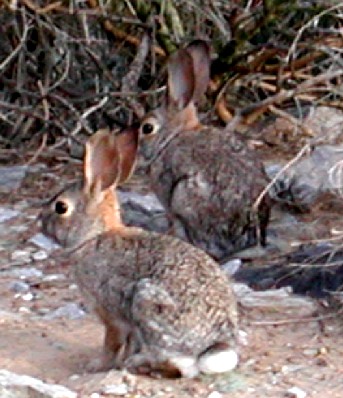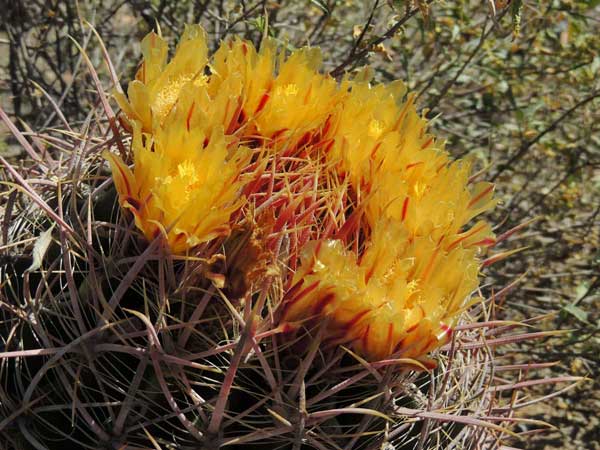Birds
More common species listed first:
-
Rock
Wren
-- S,F,W,Sp -- Very common little birds which frequently give spirited
high pitched trills while perched atop prominants especially near high points.
Their drab gray and brown color blends perfectly with the desert colors.
-
Anna's Hummingbird
-- S,F,W,Sp -- These are the most common hummingbirds seen at Lookout Mountain.
Green back; forehead and throat of males magenta.
-
Black-throated
Sparrow -- S,F,W,Sp -- Lovely birds with a jet-black
throat and bib contrasted by bright white eye brows. Beautiful singers. A very
nice description of the black-throated sparrow can be found at
Twentynine Palms Cyberzine (California).
-
Verdin
-- S,F,W,Sp -- Tiny birds, barely larger than a hummingbird. Gray/brown with a
majestic yellow head
-
Gila Woodpecker
-- S,F,W,Sp -- Common woodpecker that builds nest holes in the Saguaro Cactus.
-
House
Finch
-- S,F,W,Sp -- I was surprised to see a group of four fledglings feeding on
creosote bush seeds
-
Northern Mockingbird
-- S,F,W,Sp --
-
Gambel's Quail
-- S,F,W,Sp --
-
Red-tailed Hawk
-- F,W,Sp -- The steep cliffs often provide the uplifting winds that soaring
birds seek.
-
Common Raven
-- W -- Conspicuous, fairly large, jet black birds that soar above looking for
food. Most likely during the winter months.
-
White-crowned Sparrow
-- W,Sp -- look for these during winter and early spring.
-
American Kestrel
-- S,F,W,Sp -- This small falcon was seen cruising along ridge February 2000.
Probably feeding on birds drawn to neighborhood yards and their handouts of
seed.
-
Curve-billed Thrasher
-- S,F,W,Sp --
-
Abert's Towhee -- S,F,W,Sp -- mostly at the edges of preserve near
residential houses
|
Sponsored Links:

Black-throated Sparrow (Amphispiza bilineata) Photo by
Mike Plagens.
|





 :
usually no or very few blooms open
:
usually no or very few blooms open :
a few scattered blooms likely to be seen
:
a few scattered blooms likely to be seen :
quite a few blooms likely to be seen, depending on past rainfall
:
quite a few blooms likely to be seen, depending on past rainfall :
abundant blooms dependent on favorable rainfall
:
abundant blooms dependent on favorable rainfall






